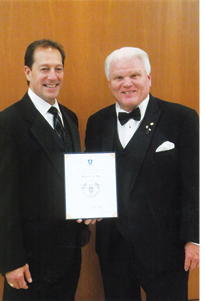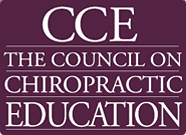Canadian-based ImaSight Inc., which develops and supplies innovative digital x-ray technology for the chiropractic healthcare industry, is now launching a major campaign into the US Market.
The company was founded in 2001 to respond to the need for an all-digital x-ray system that delivered hospital-quality images at an affordable price for any size practice.
“We’re thrilled with the opportunity to not only continue our work in the United States market, but also to increase our presence there,” commented Steve Johnston, Vice President and Co-Founder. “We exhibited at the Parker Seminar in Las Vegas in January and were very excited to see the response. It was evident that chiropractors really understood the value of working directly with a manufacturer versus having to go through the time and expense of dealing with resellers. We’re looking very forward to continuing our expansion in the US.”
 In their effort to ramp up their efforts in the US market, ImaSight has recently retained a US-based marketing and design firm, and in addition, is scheduled to attend numerous chiropractic trade shows in the United States in 2012.
In their effort to ramp up their efforts in the US market, ImaSight has recently retained a US-based marketing and design firm, and in addition, is scheduled to attend numerous chiropractic trade shows in the United States in 2012.
“It’s important for US chiropractors to know we are experts in our field, and have been in business for over a decade serving the healthcare industry,” added Johnston. “Our collective backgrounds cover a broad range of specialties in digital video and imaging systems for telemedicine and industrial applications, and our experience covers all aspects of digital and analog electronics, medical imaging, high sensitivity optics and opto-mechanics.”
The advantages of digital technology over film include increased efficiency through bypassing chemical processing, and the ability to digitally transfer and enhance images. Further, less radiation is used to produce an image of similar contrast to conventional radiography, and chiropractors enjoy immediate access to the images while eliminating costly film processing steps. Chiropractors can also take advantage of special image processing techniques that enhance overall display of the image, improving their ability to communicate with their patients.
“Our Chiropractic Power Tools™, which we developed in collaboration with chiropractors, empowers doctors to annotate, comment, and enter patient data right on the image – enhancing patient communication while improving patient care,” commented Steve. “And we made it user-friendly, so there are no complicated processes a doctor has to learn to make use of the system.”
With competition from companies like Fuji, Idexx and others, ImaSight stated that one of their main competitive advantages, in addition to being a manufacturer of their own imaging products, is their focus on delivering the highest levels of customer care.
“We are absolutely passionate about taking care of our customers,” said Johnston. “It’s something so many companies say, but so few deliver. The chiropractors that we partner with are quick to find out, however, that in our company the term customer service isn’t a department – it’s our way of doing business. We’re there for every stage of the process, from helping in determining a chiropractor’s needs, to delivery, to training and follow-on support. And when they call, they don’t get voicemail – they get answers.”
 Dr. Terry R. Yochum was honored by the Sigma Chi Fraternity as one of approximately 20 brothers to receive the distinguished “Significant Sig Award.” The honor was bestowed on Dr. Yochum on June 25, 2011 in Dallas, Texas at the annual meeting of the Grand Chapter of the International Sigma Chi Fraternity.
Dr. Terry R. Yochum was honored by the Sigma Chi Fraternity as one of approximately 20 brothers to receive the distinguished “Significant Sig Award.” The honor was bestowed on Dr. Yochum on June 25, 2011 in Dallas, Texas at the annual meeting of the Grand Chapter of the International Sigma Chi Fraternity. 



 The American Chiropractic Association announced that doctors of chiropractic are now eligible to apply for a student loan repayment program administered by the Indian Health Service (IHS), an agency of the U.S. Department of Health and Human Services (HHS). The news comes following advocacy work by the association.
The American Chiropractic Association announced that doctors of chiropractic are now eligible to apply for a student loan repayment program administered by the Indian Health Service (IHS), an agency of the U.S. Department of Health and Human Services (HHS). The news comes following advocacy work by the association.
 (Garrison, NY) Researchers almost always offer money as an incentive for healthy volunteers to enroll in research studies, but does payment amount to coercion or undue inducement to participate in research? In the first national study to examine their views on this question, the majority of institutional review board members and other research ethics professionals expressed persistent ethical concern about the effects of offering payment to research subjects. But they differed in their views of the meaning of coercion and undue influence and how to avoid these problems in concrete research situations. The study appears in IRB: Ethics & Human Research.
(Garrison, NY) Researchers almost always offer money as an incentive for healthy volunteers to enroll in research studies, but does payment amount to coercion or undue inducement to participate in research? In the first national study to examine their views on this question, the majority of institutional review board members and other research ethics professionals expressed persistent ethical concern about the effects of offering payment to research subjects. But they differed in their views of the meaning of coercion and undue influence and how to avoid these problems in concrete research situations. The study appears in IRB: Ethics & Human Research. 
 AVON, OH — HealthSource Chiropractic and Progressive Rehab® made company history this month when it broke into the top 100 of Entrepreneur Magazine’s “Franchise 500” list.
AVON, OH — HealthSource Chiropractic and Progressive Rehab® made company history this month when it broke into the top 100 of Entrepreneur Magazine’s “Franchise 500” list.
 In their effort to ramp up their efforts in the US market, ImaSight has recently retained a US-based marketing and design firm, and in addition, is scheduled to attend numerous chiropractic trade shows in the United States in 2012.
In their effort to ramp up their efforts in the US market, ImaSight has recently retained a US-based marketing and design firm, and in addition, is scheduled to attend numerous chiropractic trade shows in the United States in 2012.
 Arlington, Va.– The Council on Chiropractic Education (CCE) received a recommendation for a one-year continuing accreditation following a Dec. 14 hearing before the Department of Education’s (DOE) National Advisory Committee on Institutional Quality and Integrity (NACIQI).
Arlington, Va.– The Council on Chiropractic Education (CCE) received a recommendation for a one-year continuing accreditation following a Dec. 14 hearing before the Department of Education’s (DOE) National Advisory Committee on Institutional Quality and Integrity (NACIQI).
 Roanoke, VA- Foot Levelers has launched new software, V7+, which will enhance the Associate® Platinum and scanning patients’ feet. With sharper, more detailed images, the V7+ is designed to explain the severity of pronation and how imbalances in feet can lead to problems in the knees, hips, back and shoulders.
Roanoke, VA- Foot Levelers has launched new software, V7+, which will enhance the Associate® Platinum and scanning patients’ feet. With sharper, more detailed images, the V7+ is designed to explain the severity of pronation and how imbalances in feet can lead to problems in the knees, hips, back and shoulders.
 The National Committee for Quality Assurance (NCQA) in Washington, D.C., announced in June that the Palmer College of Chiropractic outpatient clinics in Port Orange and South Daytona, Florida, have received Recognition from the Back Pain Recognition Program (BPRP) for providing superior care to clinic patients suffering from low back pain. The two Palmer Chiropractic Clinics are affiliated with the college’s Florida Campus in Port Orange, Fla.
The National Committee for Quality Assurance (NCQA) in Washington, D.C., announced in June that the Palmer College of Chiropractic outpatient clinics in Port Orange and South Daytona, Florida, have received Recognition from the Back Pain Recognition Program (BPRP) for providing superior care to clinic patients suffering from low back pain. The two Palmer Chiropractic Clinics are affiliated with the college’s Florida Campus in Port Orange, Fla.